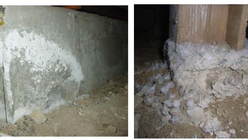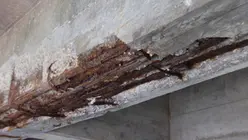Effect of Aggregate particle size on the compressive strength of concrete
Updated: Jun 17, 2022

The quality of the binder paste is one of the most important factors to achieve the desired compressive strength in concrete. It is desired to obtain the higher strength in the most economical way. One of the economical methods is to reduce the binding paste and use more aggregate instead. However, ensuring sufficient fluidity depends on increasing the amount of binder. During the hardening of the concrete, the aggregate should not enter into a chemical reaction that can cause a volume change.
In addition to filling the aggregate voids, the binder paste coat the aggregate particles surface with a thin layer. This will allow the formation of a homogeneous structure. There are two determining factors in the amount of binder paste: aggregate voids and aggregate surface area. It is necessary to care about one of them and not to neglect the other.
As the amount of fine material in the aggregate increases, thus, the surface area of the aggregates increases. As the surface area increases, the amount of water required to wet the aggregate surface also increases. Fine aggregate and mixing water are directly proportional.
The grain shape of the aggregates can be sharp-edged, cubic, amorphous, flat, etc. Aggregates with sharp corners need more water than other than rounded surface shaped aggregates. In order not to increase the water requirement of the aggregates, they must be of round-grained aggregates with a low surface area. In particular, the deformity of the fine aggregates causes vomiting and separation in the concrete, and the deformity of the coarse aggregates causes a significant decrease in the workability of the concrete.
Absorption of aggregates used in concrete is generally accepted as 3%. This prevents the use of lightweight aggregates in parts of the structure intended as carriers. The bending tensile strength capacities of lightweight aggregates show greater resistance to thermal cracking. Artificial lightweight aggregates in concrete absorb higher water contents. An ideal granulometry should have a minimum voids as possible. If an aggregate granulometry arrangement is made in which the spaces between the large particles can be filled with smaller particles continuously, aggregate with minimum voids will be obtained.
Apart from granulometry and maximum grain size, aggregates also have other properties that affect the compressive strength of concrete. The geometric shape of the aggregate particles has an effect on the concrete strength. Thin and long aggregate particles (those smaller than one-fifth of their width) cause a decrease in concrete strength due to their easy breakage. For this reason, it is undesirable to have more than fifteen percent thin and long particles in the aggregate.
If the aggregates to be used in concrete show a volume change due to the effect temperature, this leads to significant expansion and contraction of the aggregates. As a result, the concrete compressive strength decreases. The quality of aggregates depends on their low water absorption ability. Aggregate surface structure, cleanliness and chemical resistance affect the bonding properties of aggregates in concrete, and thus the compressive strength of concrete.
Aggregates containing clay, silt, mica, wood chips and other organic substances, chemical salts, and soft elements cause a decrease in the compressive strength of concrete. In experiments with granular limestone, it has been determined that aggregates made by breaking the altered limestone containing some clay cause a decrease of approximately twenty percent in the 7-day compressive strength of concrete.















Comments